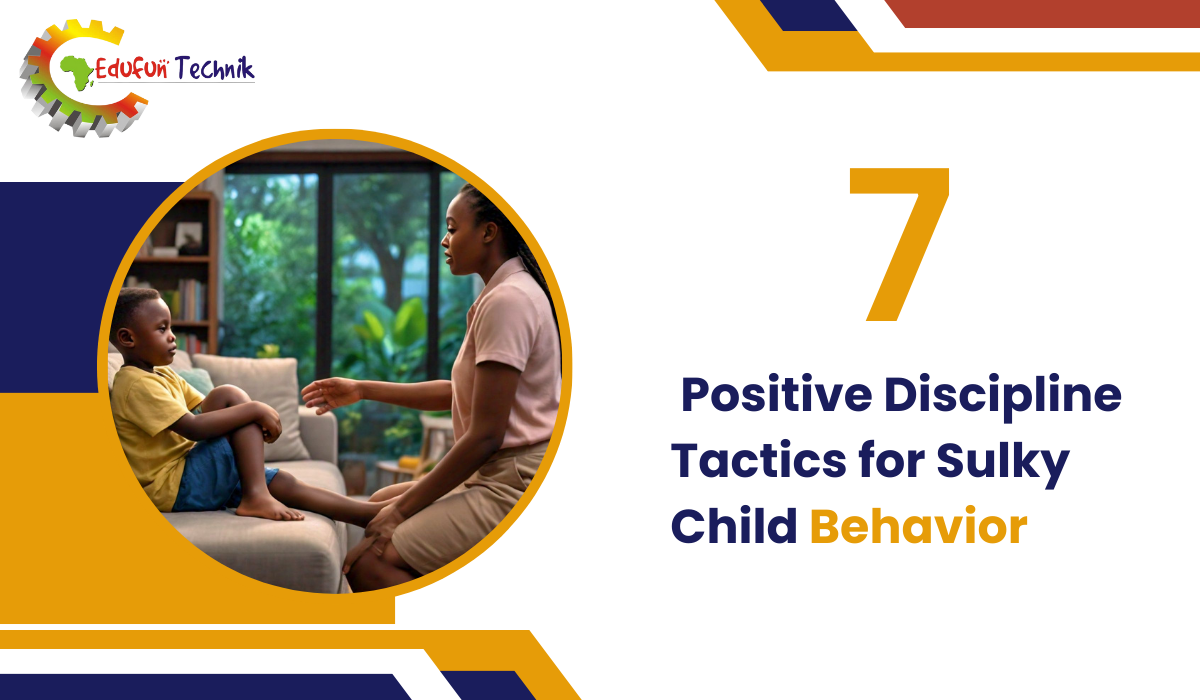Sulky behavior in children can be frustrating for parents and educators to deal with. It’s natural to feel annoyed or want to punish them, but taking a harsh approach often backfires and makes the situation worse.
The key is using positive discipline tactics that teach kids how to manage their big feelings in a healthy way. Just think – if we can help our children build emotional intelligence skills from a young age, we’re setting them up for success in all areas of life. Instead of sulking and shutdowns, they’ll learn to cope with frustration, anger, and sadness in a constructive manner.
We’ll explore positive strategies for addressing sulky outbursts with patience and understanding. The end goal? Raising emotionally resilient children who can bounce back from disappointments.
Remain Calm and Patient
When your child is sulking or throwing a tantrum, it’s so easy to get frustrated with yourself. Their pouting and defiance can push all your buttons! But responding with anger or harsh discipline will only make the situation worse.
Children are like little emotional sponges – they absorb the vibes we put out there. If you meet their sulkiness with yelling or punishment, they’ll just get more upset and shut down further. But if you stay calm and patient, it helps them calm down too.
Imagine a scenario, your child is in a horrible mood after you said no to something they wanted. As the frowns and crossed arms start, take a deep breath. Speak in a gentle, level tone. Get down on their level, make eye contact, and acknowledge their feelings with simple phrases like “I know, you’re feeling very disappointed right now.”
By keeping your cool, you’re modeling the emotional regulation you want to see from them. It’s a lot harder for them to escalate their sulking when you’re serene and unruffled. With patience and empathy, the storm will pass more quickly.
Validate Their Feelings
When your child is sulking or throwing a tantrum, it can be really tempting to shut it down with phrases like “Don’t be silly!” or “You’re overreacting.” But minimizing their feelings this way will just make them feel more misunderstood and fuel their sulky mood.
Instead, try validating their emotions first before addressing the behavior. This shows you see their perspective and empathize with how they’re feeling in that moment. Use simple phrases like:
“I know, you’re feeling really angry that I said no to getting that toy.”
“You seem very frustrated that we can’t go to the park today.”
“I understand you’re disappointed we can’t have ice cream for dinner.”
Validating their feelings doesn’t mean you’re giving in to their demands or excusing the sulky behavior. You’re simply acknowledging how they feel, which can go a long way in defusing the situation. Once they feel heard and understood, they’re more open to calming down and listening.
By validating regularly, you’re also teaching them emotional awareness – the ability to label their feelings. This emotional intelligence skill is so valuable as they grow up navigating relationships, school, and life’s many ups and downs.
Offer a Quiet Space
When your child is in a full-blown sulk, sometimes the best move is to give them a break in a designated “calm down” area. This allows everyone to take a pause and regain their composure before discussing the issue.
You can set up a cozy, low-stimulation space in a corner of their room or another area of your home. Stock it with soft blankets, pillows, stuffed animals, and quiet activity tools like coloring books and clay. Maybe include calming sensory items like a glitter bottle or fidget toys too.
When you sense a sulking tantrum brewing, gently remind them “It looks like you need some quiet time in the calm down area.” Don’t force them, but encourage them to take some space until they feel more settled.
With time and consistency, the calm down area will become a positive tool for regaining control rather than a punishment. Let me know if any part of this tactic needs more explanation.
Use Positive Reinforcement
Purposefully praising and rewarding your child when they handle their big feelings well can be a powerful motivator. The human brain is wired to reinforce behaviors that get positive attention and rewards. By making a big deal when your child calms themselves down or expresses frustration appropriately, you’re increasing the chances they’ll repeat that behavior next time.
In addition to enthusiastic verbal praise, you can reinforce with small rewards like treats, or privileges they enjoy. Maybe they get to pick the evening family movie if they stayed calm all day.
The goal isn’t to bribe them, but to enthusiastically reinforce the positive behavior you want to see more of. Eventually, managing emotions well becomes an ingrained habit and expectation.
Be consistent and don’t wait for perfect behavior – reward even small wins in emotional regulation. Those tiny seeds will blossom into resilient kids.
Teach Coping Strategies
When your child is in the throes of a mega sulk or tantrum, it’s hard for them to just “get over it” using willpower alone. That’s where proactively teaching them specific coping strategies can make a huge difference.
There are so many simple yet effective techniques you can model and practice together when they’re calm, like: Have them take big deep “balloon breaths”, putting their hands on their belly to feel it expand with air. Slowly releasing the breath can be very calming.
The more you rehearse and use this technique, the more natural it becomes for your child to employ them in the heat of a meltdown. With time and patience, managing difficult emotions gets easier.
Be sure to model and reinforce your own use of coping strategies when you’re feeling stressed too. After all, kids are excellent mimics.
Set Clear Expectations
Kids thrive best with clearly established boundaries and consequences. Having a predictable routine with consistent rules helps minimize triggers for sulky outbursts.
Sit down together and discuss family expectations for emotional expression. Getting their input engages cooperation. You might agree on:
- Raising our voices or name-calling is unacceptable
- We use calm down tools (breathing, breaks, etc.) to reset before discussing issues
- Sulking/silent treatment is okay for a short cool-off period, but not indefinitely
Decide on age-appropriate consequences if those expectations aren’t met, like loss of privileges. Follow through every time – inconsistency erodes their motivation to comply.
Display the expectations visually as a reminder, like a color-coded feelings chart. When they’re sulking, refer to it calmly: “I see you’re feeling frustrated right now. What calm down strategy should we try based on our chart?”
The boundaries make them feel safe, while the positive tactics prevent escalation. With preparation and patience, sulky spells will occur less frequently over time.
Seek Professional Help
For most kids, sulky behavior is a normal part of emotional development that can be improved with the positive discipline tactics we’ve covered. But sometimes, frequent, severe, or persistent sulking can signal a bigger underlying issue.
If your child’s sullen, withdrawn moods seem excessive for their age or persist long-term despite your best efforts, it may be wise to seek professional support. Consulting experts like Child Psychologists, Child Counselors and Pediatricians.
Seeking help is not an admission of failure. Even the most nurturing parents sometimes need extra tools and guidance, especially if a child is struggling.
Check with your local hospitals, clinics, and schools for recommendations on trusted child psychologists and counselors in your area. With their expert support combined with your unconditional love, your sulky child will blossom.
As parents, few things are more challenging than dealing with a sulky, moody child. Their pouting, silent treatments, and emotional outbursts can leave us feeling helpless and frustrated.
The path isn’t always easy, but the rewards are immense. Imagine raising kids who can bounce back from disappointments with resilience. Who can articulate their feelings and solve conflicts with maturity. Who grow into confident, emotionally-regulated adults.
It starts with us modeling patience, empathy and consistency in those heated sulky moments. It may not click overnight, but stick with these positive approaches. Over time, you’ll notice sulks decreasing as your child’s emotional toolbox expands.







